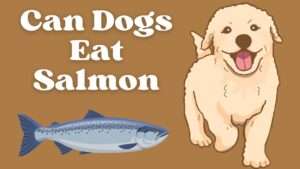As dog parents, we often find ourselves pondering over what foods are safe for our furry companions. Figs, with their sweet taste and unique texture, may seem like a nutritious option for both humans and dogs. But can dogs eat figs safely? Let’s delve into this question and explore all the aspects to ensure the well-being of our canine friends.
Contents Overview
What is Figs?
Figs are delicious, sweet fruits that grow on the ficus tree, known scientifically as Ficus carica. They are native to the Middle East and Mediterranean regions but are now cultivated worldwide. Figs have a unique texture, with soft, chewy flesh and tiny edible seeds. They come in various colors, including green, purple, and black, and are enjoyed fresh or dried. Figs are not only tasty but also packed with nutrients, making them a popular choice for both humans and animals.
Nutritional Value of Figs
Figs are nutrient-rich fruits, that provide essential vitamins, minerals, and dietary fiber. A single fig contains a variety of nutrients, including potassium, calcium, magnesium, and vitamins A, B, and K. These nutrients contribute to overall health and well-being, supporting functions such as bone strength, heart health, and immune function. Figs are also a good source of dietary fiber, promoting digestive health and aiding in weight management. Incorporating figs into your diet can provide a tasty way to boost your nutrient intake and enjoy their numerous health benefits.
Are Figs Safe for Dogs?
Yes, dogs can eat figs, but it’s important to proceed with caution. Figs are not toxic to dogs and can provide some health benefits, including essential nutrients like vitamins A, B, and K, as well as minerals like potassium and calcium. However, figs also contain small seeds that can pose a choking hazard, especially for small dogs or those prone to swallowing food quickly. Additionally, the high fiber and natural sugar content in figs may cause digestive issues if consumed in excess. To safely feed figs to your dog, remove the seeds and offer them in moderation as an occasional treat, while monitoring for any adverse reactions.
Potential Benefits for Dogs
Incorporating figs into a dog’s diet, in moderation, may offer several potential benefits:
Improved Digestive Health:
The high fiber content in figs can support digestive regularity and prevent gastrointestinal issues in dogs.
It may also help alleviate symptoms of digestive disorders like irritable bowel syndrome (IBS) or colitis in some cases.
Boosted Immune System:
Figs contain vitamin C, which is known to bolster the immune system in dogs, helping them fend off illnesses and infections.
A strong immune system is crucial for maintaining overall health and vitality in dogs of all ages.
Support for Bone Health:
The presence of calcium and phosphorus in figs contributes to maintaining strong bones and teeth in dogs.
This is particularly beneficial for puppies during their growth stages and senior dogs prone to bone-related issues.
Weight Management:
Due to their high fiber content, figs can help dogs feel fuller for longer periods, potentially aiding in weight management and preventing obesity.
Potential Risks of Feeding Figs to Dogs
Feeding figs to dogs can pose certain risks, including:
Choking Hazard:
The fig’s seeds and skin can pose a choking hazard, especially if not adequately chewed by the dog.
Ingesting large pieces or whole figs can lead to choking or obstruction of the esophagus or intestines.
Gastrointestinal Upset:
Figs contain natural sugars and fiber, which may cause gastrointestinal upset in some dogs, leading to symptoms such as diarrhea, vomiting, or flatulence.
Dogs with sensitive stomachs or those prone to digestive issues may be particularly susceptible to gastrointestinal upset from consuming figs.
Allergic Reactions:
While rare, some dogs may be allergic to figs or develop sensitivity to certain fruits, leading to allergic reactions.
Signs of an allergic reaction in dogs may include itching, hives, swelling, difficulty breathing, or gastrointestinal distress.
Potential Toxicity:
While the flesh of ripe figs is generally safe for dogs to consume, other parts of the fig plant, such as the leaves and sap, contain compounds that may be toxic to dogs if ingested in large quantities.
Dogs should be prevented from accessing fig plants to avoid potential toxicity issues.
Precautions When Feeding Figs to Dogs
To minimize the risks associated with feeding figs to dogs, consider the following precautions:
Remove Seeds and Skin:
Before offering figs to your dog, ensure that you remove the seeds and skin, as these parts can pose a choking hazard.
Cut the figs into small, bite-sized pieces to make them easier for your dog to chew and digest.
Feed in Moderation:
Figs should be fed to dogs in moderation to prevent gastrointestinal upset or other adverse effects.
Limit the quantity of figs offered to your dog and monitor their response for any signs of digestive discomfort.
Monitor for Allergic Reactions:
Keep a close eye on your dog after introducing figs into their diet, and monitor for any signs of allergic reactions or sensitivity.
If your dog exhibits any adverse reactions after consuming figs, discontinue feeding them immediately and consult with a veterinarian.
Avoid Fig Plants:
Prevent your dog from accessing fig plants, as other parts of the plant besides the fruit may be toxic to dogs if ingested.
Keep fig plants out of reach or consider fencing off areas where fig plants are present to prevent accidental ingestion.
Safe Ways to Feed Figs to Dogs
When it comes to feeding figs to your beloved canine companion, safety is paramount. While figs can offer potential health benefits for dogs, it’s essential to follow safe feeding practices to ensure their well-being. Let’s explore some safe ways to feed figs to dogs, allowing you to incorporate this nutritious fruit into their diet responsibly.
- Preparation:
Proper preparation of figs is crucial to ensure they are safe for your dog to consume:
- Wash the figs thoroughly to remove any dirt or pesticides.
- Remove the stem and any leaves attached to the figs.
- Cut the figs into small, bite-sized pieces, removing the seeds and skin to prevent choking hazards.
- Moderation:
Feeding figs to your dog in moderation is key to preventing digestive upset and other potential issues:
- Start by offering a small amount of figs to gauge your dog’s reaction.
- Monitor your dog for any signs of digestive discomfort, such as diarrhea or vomiting.
- Limit the quantity of figs offered to your dog, ensuring it does not exceed 10% of their daily caloric intake.
- Mixing with Dog Food:
Incorporating figs into your dog’s regular meals can be a convenient way to introduce this nutritious fruit into their diet:
- Chop the figs into small pieces and mix them with your dog’s regular food.
- Ensure the figs are thoroughly mixed to encourage your dog to eat them along with their meal.
- Gradually increase or decrease the amount of figs based on your dog’s response and dietary needs.
- Homemade Treats:
You can also use figs to create homemade treats for your dog, providing them with a tasty and nutritious snack:
- Combine mashed figs with other dog-friendly ingredients such as oats, peanut butter, or yogurt to create homemade treats.
- Shape the mixture into small balls or use cookie cutters to create fun shapes.
- Bake or freeze the treats as desired, and offer them to your dog as an occasional reward or snack.
- Freeze-Dried Figs:
Opting for freeze-dried figs can be a convenient and safe option for feeding to your dog:
- Freeze-dried figs retain much of their nutritional value while eliminating the risk of spoilage.
- Offer freeze-dried figs to your dog as a crunchy and flavorful snack, or crumble them over their regular food for added texture and taste.
- Consultation with a Veterinarian:
Before introducing figs or any new food into your dog’s diet, it’s essential to consult with a veterinarian:
- A veterinarian can provide personalized dietary recommendations based on your dog’s age, breed, size, and health status.
- They can also help identify any potential allergies or sensitivities your dog may have to figs or other foods.
When to Avoid Figs to Dog
- Allergic Reactions: If your dog has a known allergy to figs or exhibits signs of sensitivity to certain fruits.
- Digestive Issues: When your dog experiences digestive problems such as diarrhea, vomiting, or bloating after consuming figs.
- History of Choking: If your dog has a history of choking or swallowing large pieces of food without chewing adequately.
- Medical Conditions: When your dog has specific medical conditions that may be exacerbated by the consumption of figs, such as pancreatitis or diabetes.
- Frequent Treats: If your dog already consumes a diet high in treats or has weight management issues, as figs may contribute to excessive calorie intake.
Safe and Suitable Alternatives of Figs For Dogs
If figs aren’t a suitable option for your dog, there are plenty of safe and nutritious alternatives to consider. Blueberries, for example, are packed with antioxidants and vitamins that promote overall health. Apples, when sliced and seeds removed, offer a crunchy and vitamin-rich treat. Carrots are low in calories and high in fiber, making them excellent for dental health and digestion. Additionally, bananas provide potassium and energy-boosting carbohydrates. Always introduce new foods in moderation and monitor your dog’s response for any adverse reactions.
Bottom Line
In conclusion, while figs are not toxic to dogs and can offer nutritional benefits when given in moderation, it’s essential to consider the potential choking hazard, high fiber content, and natural sugars. By following safety precautions and monitoring your dog’s response, you can safely incorporate figs into their diet as an occasional treat. As responsible dog parents, prioritizing your furry friend’s health and well-being is paramount in all dietary choices.




































+ There are no comments
Add yours